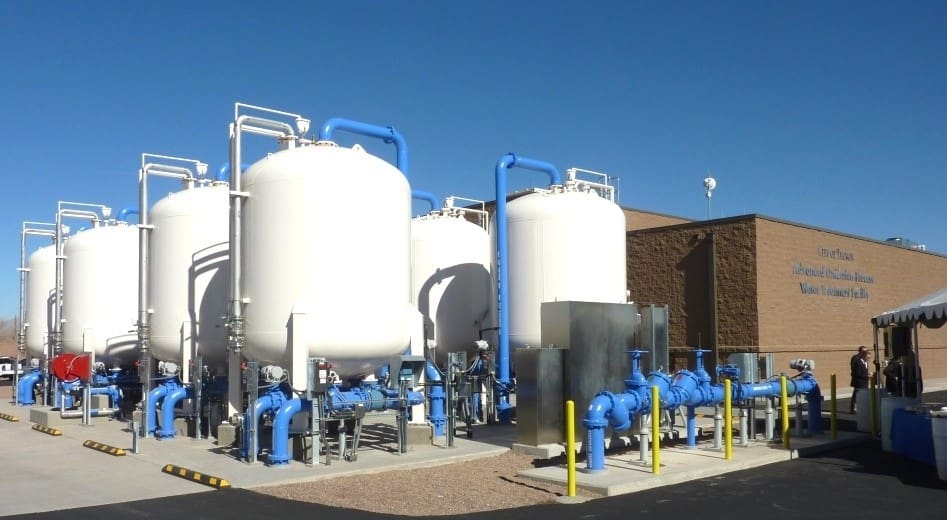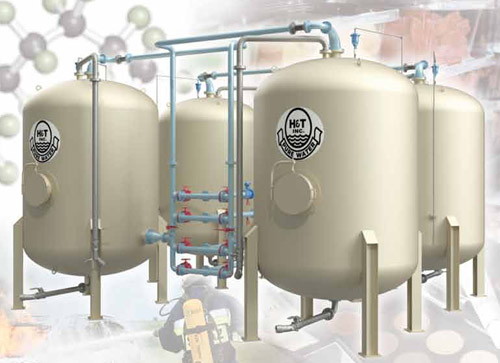PFAS Treatment in Groundwater
Wiki Article
Just How PFAS Treatment Makes Sure Clean and Sustainable Water
The presence of PFAS, commonly known as "for life chemicals," poses substantial obstacles to water top quality and public wellness. The effects of these therapies extend beyond immediate health advantages; they elevate essential inquiries regarding long-lasting water management strategies that must be resolved to make sure a durable future.
Comprehending PFAS Contamination
PFAS, or per- and polyfluoroalkyl materials, have actually arised as a significant environmental issue because of their extensive occurrence and determination in the setting. These artificial chemicals have actually been made use of in numerous commercial applications and customer items, including non-stick cooking equipment, waterproof clothes, and food packaging, due to their distinct residential properties such as water and oil resistance.The contamination of dirt and water sources by PFAS occurs mainly through industrial discharges, firefighting foam use, and seeping from landfills. pfas management. Once released, these materials are immune to deterioration, causing their build-up in the atmosphere. This persistence raises crucial problems, as PFAS can travel fars away via groundwater and surface water supply, influencing alcohol consumption water materials and communities

Health Risks of PFAS
The perseverance of PFAS in the setting elevates substantial health and wellness worries for individuals exposed to these materials. Referred to as "permanently chemicals," PFAS do not break down conveniently and can gather in bodies in time. Research has actually connected PFAS exposure to numerous negative health and wellness effects, consisting of body immune system dysfunction, liver damages, and boosted danger of certain cancers cells - pfas management. Notably, researches have actually shown raised cholesterol levels and possible influence on reproductive and developmental wellness, especially in expectant people and infants.The ubiquity of PFAS in consumer items, such as non-stick pots and pans, water-repellent textiles, and food packaging, more amplifies the danger of exposure. Consuming water infected with PFAS is a significant problem, as these chemicals can leach into groundwater resources. Susceptible populaces, including kids and those living near commercial sites, may deal with heightened dangers due to their establishing systems and possible for higher exposure levels.
As recognition of these wellness risks remains to grow, governing firms are beginning to establish guidelines for PFAS levels in alcohol consumption water. Public wellness initiatives are necessary to reduce direct exposure and safeguard areas from the lasting impacts of these hazardous materials.

Cutting-edge Treatment Technologies
Exactly how can we effectively take on the obstacles positioned by PFAS contamination in water sources? Ingenious therapy innovations are arising as critical remedies in the pursuit for tidy water. These approaches concentrate on the elimination or destruction of per- and polyfluoroalkyl compounds (PFAS), which are notorious for their perseverance in the atmosphere.One appealing strategy is adsorption utilizing innovative materials, such as triggered carbon and ion exchange materials. These products have shown effectiveness in capturing PFAS molecules from water. One more significant technology is membrane filtering, which uses nanofiltration and turn around osmosis to different contaminants at the molecular level, thus supplying an obstacle versus PFAS.
In addition, progressed oxidation processes (AOPs) employ strong oxidants to break down PFAS compounds right into harmless byproducts. This method is especially efficient for treating extremely polluted water resources. Bioremediation methods, using details microbes, are additionally being discovered to degrade PFAS.
As research continues, crossbreed systems that incorporate numerous technologies might offer improved efficiency, resolving the complexities of PFAS contamination. The growth and execution of these cutting-edge therapy technologies are essential actions towards ensuring the safety and sustainability of our water sources.
Benefits of Efficient PFAS Treatment
Efficiently treating PFAS contamination in water sources substantially enhances public health and ecological security. PFAS, frequently referred to as "for life chemicals," are immune to degradation and can gather in the human body, leading to severe health threats such as cancer cells, liver damage, and body immune system dysfunction. By carrying out efficient therapy techniques, areas can decrease direct exposure to these damaging substances, eventually boosting the health end results of their populations.
Additionally, successful PFAS treatment adds to the preservation of regional ecosystems. Contaminated water can adversely affect water life and disrupt the delicate equilibrium of local habitats. By making certain tidy water, therapy processes safeguard biodiversity and maintain ecological stability.
Additionally, effective PFAS removal can promote public self-confidence in water quality. When neighborhoods are ensured that their alcohol consumption water is totally free from unsafe contaminants, it promotes a sense of security and health. This trust is important for neighborhood involvement and assistance for recurring water management initiatives.
Future of Water Sustainability
Amidst growing worries concerning water top quality and shortage, the future of water sustainability depends upon ingenious techniques and joint efforts. As areas deal with the impending risks of contaminants like PFAS, the advancement of advanced treatment modern technologies is vital. These technologies not only concentrate on the removal of dangerous substances however additionally promote the reuse and recycling of water, consequently reducing general need.Moreover, reliable water administration plays a crucial duty in ensuring lasting practices. Policymakers must incorporate clinical research study with regulatory frameworks to develop clear standards for water usage and therapy. Stakeholder involvement, consisting of local communities and sectors, promotes a feeling of common responsibility and urges sustainable practices across numerous markets.
Investment in facilities is also critical; updating aging systems to incorporate modern purification and purification methods can dramatically boost water quality. Additionally, accepting eco-friendly modern technologies, such as all-natural filtering systems, can provide environment-friendly options.
Eventually, the future of water sustainability hinges on an all natural technique that m270 waste management incorporates innovation, plan, and area involvement. By focusing on these elements, we can secure our water sources for generations ahead, guaranteeing tidy and sustainable water for all.
Final Thought
In verdict, the effective treatment of PFAS is essential for guaranteeing tidy and lasting water. By employing sophisticated modern technologies such as activated carbon adsorption, membrane filtering, and progressed oxidation procedures, communities can substantially lower the health and wellness risks connected with these contaminants. The assimilation of these treatment methods sustains community defense and enhances biodiversity. Ultimately, robust PFAS treatment techniques add to long-lasting durability in water administration, promoting public depend on in water top quality and advertising lasting techniques.Report this wiki page